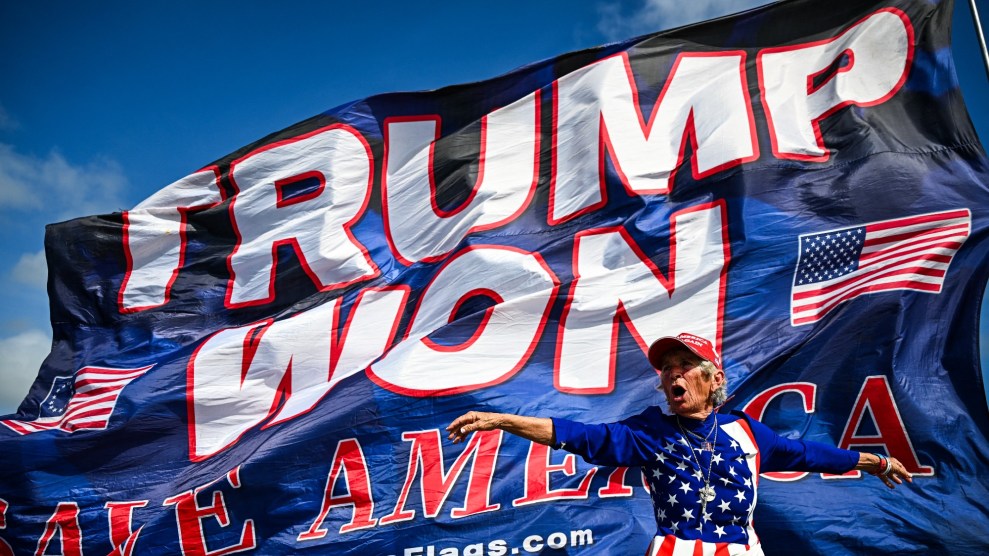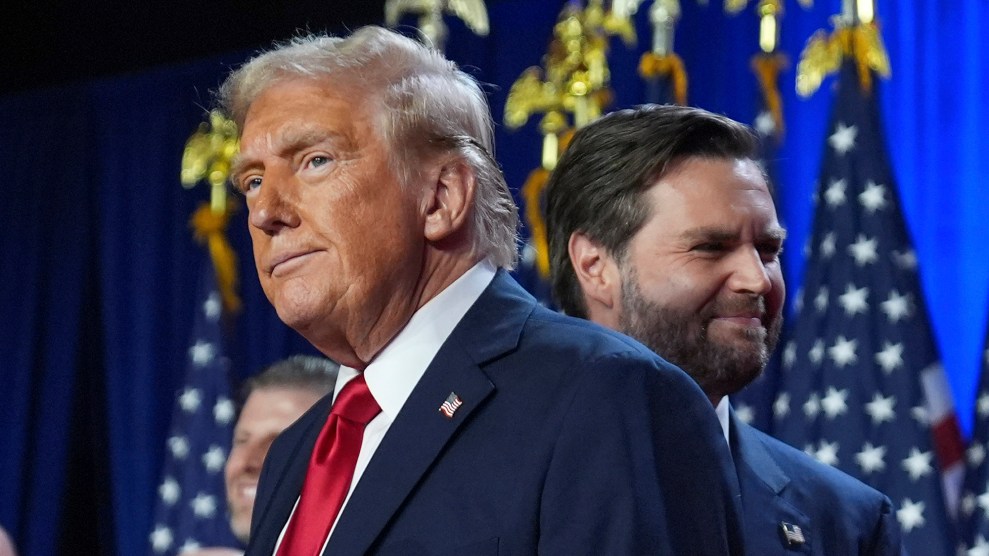Within conservative circles, most politicians and commentators recognize corporate welfare when they see it. They just downplay its true nature by giving it more palatable names, like “providing stability to financial markets” or “implementing a liquidity backstop”—terms Treasury Secretary Henry Paulson used on September 7 when he announced the massive government bailout of mortgage giants Fannie Mae and Freddie Mac. But there are always a few true believers—who deserve credit for their consistency, if nothing else—ready to use the dreaded S-word. Free-market zealots like those at the libertarian Cato Institute are now arguing that the problem with Fannie and Freddie is that they were “socialist from the start,” while others are applying the term to the federal takeover. Republican Sen. Jim Bunning of Kentucky said that when he first heard about the bailout plan, “I thought I woke up in France. But no, it turns out socialism is alive and well in America.”
If only this were true. We’d probably be a whole lot better off if the Federal National Mortgage Association (Fannie Mae) and Federal Home Loan Mortgage Corporation (Freddie Mac), which together guarantee more than 40 percent of the mortgages in the United States, had been “socialist from the start”—that is, government entities owned and run in the public interest. Instead, they are so-called government-sponsored enterprises, or GSEs—publicly chartered, but stockholder owned. They are run as private corporations, with an army of lobbyists to advance their interests, but with “implicit” federal backing. As Paul Krugman puts it, “This implicit guarantee means that profits are privatized but losses are socialized. If Fannie and Freddie do well, their stockholders reap the benefits, but if things go badly, Washington picks up the tab. Heads they win, tails we lose.”
Even the government “takeover” involves putting these companies into conservatorship, which means assuming responsibility for them—on a temporary basis, at least hypothetically. It falls short of making them part of the government whose taxpayers are saving them from bankruptcy at a cost of at least $25 billion, according to an estimate by the Congressional Budget Office, and possibly much more. And in the end, it will help all the banks and other lending and financial-services institutions that in turn depend upon the solvency Fannie and Freddie, as much as it will aid struggling homeowners by stabilizing the housing market.
Herbert Hoover tried a similar public-private setup with the Federal Home Loan Bank Act of 1932, which aimed to support banks in making loans to homeowners. But its impact was limited, and when Franklin Roosevelt came into office, he asked Congress for legislation that focused more directly on the needs of working-class and middle-class homeowners, rather than the lending institutions, through something called the Home Owners’ Loan Corporation.
Here’s how Arthur Schlesinger describes it in his book The Coming of the New Deal: “The Home Owners’ Loan Corporation, which went into action in the summer of 1933, bought mortgages from holders who could carry them no longer, financed the immediate payment for taxes and repairs, and rewrote the mortgages to provide easy repayment over a long term and at relatively low interest rates…[O]wners of about one-fifth of the nation’s non-farm dwellings sought HOLC loans. More than a half were granted. In the end…HOLC actually held about one-sixth the total urban home mortgage debt.” There were tricky problems in appraisals, loan criteria, servicing, and in due course its own foreclosures, but the HOLC actually managed to end its four-year run with its accounts $11 million in the black. It’s widely credited with saving millions of low- and middle-income Americans from foreclosure, while also expanding home ownership in the process.
Andrew Jakabovics, associate director for the Economic Mobility Program at the Center for American Progress, was among the first to float the idea of the HOLC as a model for dealing with the current crisis. Back in the September 2007, he wrote; in The New Republic, “as the threat of eroding house prices looms larger, a neighborhood’s downward spiral can be hastened by panicked homeowners willing to take any offer before their house becomes nearly worthless. By providing direct assistance to homeowners through a government entity modeled on the HOLC but with the ability to negotiate the complexities of the present securitization process, we can eliminate the panic and stabilize neighborhoods in addition to helping individual homeowners.”
Earlier this week, on the Center for American Progress’ website, Jakabovics outlined a plan that called for a more active approach by conservators, including government refinancing and resecuritization of loans: “American taxpayers will do better when the…conservators refinance or restructure the outstanding troubled mortgages in the two GSEs’ portfolios to provide lower interest rates or loan balances, rather than having the GSEs sit on a pile of delinquent, non-performing loans leading to foreclosures next door.” Last March, Sen. Chris Dodd (D-Conn.) and Rep. Barney Frank (D-Mass.), chairmen of the Senate and House banking committees, respectively, were also talking about a plan they compared to the HOLC—though their plan called for the government to back mortgages from private lenders, rather than issue mortgages itself. In effect, even the most progressive solutions call for some version of public-private partnerships—better conceived and better regulated, but preserving the role and profits of the private sector. No one has yet proposed creating government-owned and -run lending institutions directly responsible to the populace, even though this might well turn out to be fairer, cheaper, and more efficient. (In a way, it runs parallel to the Democrats’ support of a “universal health care” plan that preserves the role and profits of private insurance companies, rather than the fairer and cheaper single-payer model.) Why is this? Presumably because by keeping private financial institutions in the mix, Democrats can not only continue collecting their campaign contributions, but avoid anything that smacks of the politically deadly S-word.
The right, of course, shows no such restraint in advancing its ideological position—and the statements of the two presidential candidates on the Fannie/Freddie crisis illuminate the pitfalls of the Democrats’ timid approach. Henry Paulson has said the government’s long-term plans for the two GSEs will be determined by the next administration. For McCain—who comes off as somewhere to the right of the Bush administration when speaking on this issue—the solution is simple: privatization. He seems to echo the position of the Cato Institute, which declares, “This is not a market failure as so many are now claiming. It is a government failure, pure and simple.” As Bloomberg News described it, “McCain is clear on what he wants to do. He backs a solution put forward by former Federal Reserve Chairman and fellow Republican Alan Greenspan that would break the companies up and sell the pieces off.” McCain’s top economic adviser, Douglas Holtz-Eakin, told the network that McCain would “get them completely off the taxpayers’ back.”
On the other side, the Obama campaign has called McCain’s push for privatization “hasty” and “ideological,” but as of Tuesday had offered no clear alternative. Obama’s economic adviser, Jason Furman, told Bloomberg that “the outcome would depend on ‘disentangling’ the important roles that Fannie and Freddie perform that can’t be replicated by the private sector from those functions that can be handled by the market.” Not exactly something you can turn into a campaign slogan.















